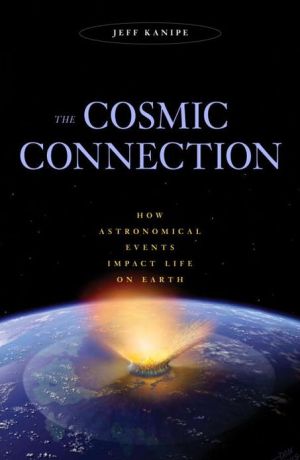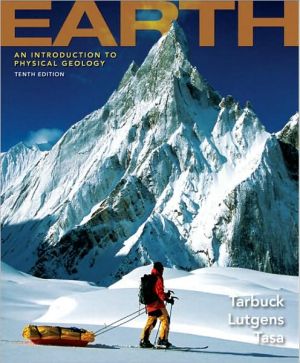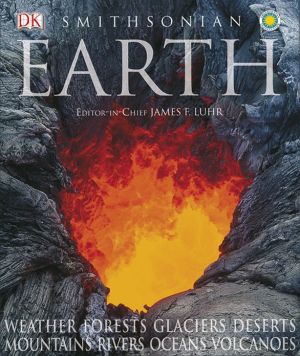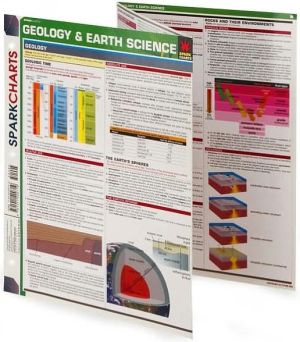The Cosmic Connection: How Astronomical Events Impact Life on Earth
In this sweeping tour of the cosmos and our place within it, acclaimed science writer Jeff Kanipe shows the many ways we are connected to the vast universe we inhabit. Long before our apelike ancestors dropped from the trees and began playing with fire, even before the Sun emerged from its chrysalis of dust and irradiated its brood of planets, numberless and nameless astronomical events affected Earth and its emerging life-forms. Our chemical makeup—from the iron in our blood to the calcium...
Search in google:
In this sweeping tour of the cosmos and our place within it, acclaimed science writer Jeff Kanipe shows the many ways we are connected to the vast universe we inhabit. Long before our apelike ancestors dropped from the trees and began playing with fire, even before the Sun emerged from its chrysalis of dust and irradiated its brood of planets, numberless and nameless astronomical events affected Earth and its emerging life-forms. Our chemical makeup - from the iron in our blood to the calcium in our bones - derives from stars that lived and died hundreds of millions of years ago. Comets have showered organic molecules into our oceans, and asteroid impacts have wiped out predominant species that lived before.Tracing the whole natural history of how events in the near and far universe have influenced life on Earth today, and how they might influence life in the future, Kanipe, with unparalleled eloquence, explores a host of intriguing questions:• How the Earth's orbit and inclination have triggered past ice ages• The role ancient supernovae may have played in mass extinctions and genetic changes• How a slight but persistent dip in solar output contributed to a multicentury cooling event called the "Little Ice Age" • The dangers posed by intense geomagnetic storms• How ancient asteroid impacts pressed Earth's evolutionary reset button and how astronomers are striving to make sure that it won't happen again• The widespread effects that our Sun's changing galactic environment has on life and climateKanipe also reflects upon the possible societal effects of alien contact, a type of cosmic intervention that some astronomersbelieve could happen within the next few decades. His elegant, jargon-free descriptions of the truly "big-picture view" of life on Earth will fascinate and inform everyone who has an interest in astronomy, the evolution of our planet, and the future of humankind. Publishers Weekly Starred Review."Look anywhere beyond our little nook of the Galaxy and you will see a universe that is not only dispassionate, but dangerous and random"; escaping that nook, author and science writer Kanipe (Chasing Hubble's Shadows) examines in fascinating detail the countless astronomical events that, from remote distances and times, have steered the evolution of life on Earth. Kanipe explains how a serendipitous axis played a central role in shaping the planet's climate; meteor and comet strikes (as recently as 1908) have caused significant damage but not global catastrophe; and the explosion of ancient stars carved out the "Local Bubble" in which Solar System resides: "as if the region has been sterilized of potentially lethal galactic hazards." There's no guarantee those factors won't turn against us-a wayward neutron star could swing by and "scramble the atomic and molecular structure of the solar system"-but Kanipe is an infectious optimist who doesn't let these long-shot dangers curb his curiosity or enthusiasm. Exploring also the possibility of interstellar civilizations, the end of the universe and other topics, this detailed, broad-ranging astronomical meditation leave science buffs wondering at our good fortune. Copyright © Reed Business Information, a division of Reed Elsevier Inc. All rights reserved.
\ THE COSMIC CONNECTION\ \ HOW ASTRONOMICAL EVENTS IMPACT LIFE ON EARTH \ \ \ \ By JEFF KANIPE \ Prometheus Books \ Copyright © 2009 \ \ Jeff Kanipe\ All right reserved. \ \ \ ISBN: 978-1-59102-667-9 \ \ \ \ \ Introduction As sentient creatures, we humans have been looking at the heavens for tens of thousands of years, give or take, and yet civilization's reach has made little more than a chalk jot on the great wall of time. But during that time we've gone from fashioning stone tools to achieving scientific and technological breakthroughs bordering on the miraculous. In the twentieth century alone, old-timers could tell striplings that they lived in a time before the automobile and the airplane but also lived to see artificial satellites moving silently among the stars of the night sky, astronauts ambling on the Moon, and pictures taken from the surface of Mars. We now live in a period of on-the-verge science, typified by exciting new insights in quantum mechanics, genetics, nanotechnology, and stem cell research. One can only wonder what the next 10,000 years will bring! \ Alas, if only humankind could be characterized by such positive strides. Unfortunately, there is no getting around the fact that our forward momentum has too often been severely compromised by our inherent impulses toward infamy beyond comprehension. While I certainly don't agree with W. S. Gilbert that humankind is "Nature's sole mistake," it does seem, sometimes, as if we are Nature's experiment-one that, hopefully, will turn out to be a success.\ Our ascendancy as a species is usually credited to Darwinian processes, such as passing along traits from one generation to the next, genetic mutations that improve an organism's chances of survival, successful adaptations of organisms to different regions or environments, and the flourishing of one species over another. Nevertheless, evolution alone is not enough to explain the ascension of the human race on this amazing planet. In its most sweeping terms, life also results from conditions not of our world but of our universe. Some of these, like the motion of the Sun through the Galaxy, might be said to be mechanical in nature. Others, like the impact of a comet or asteroid on Earth, could be considered random, capricious events. In any case, evolution would have taken a two-dimensional path without them.\ Long before protohumans dropped from the trees and began playing with fire and scribbling on cave walls, even before the Sun emerged from its chrysalis of dust and irradiated its nascent brood of planets, numberless and nameless astronomical events steered the course and direction of the Earth and its emerging life-forms. These astronomical factors contributed to giving the Earth its early advantage in the cosmic game of life. Others can be credited with maintaining, even nurturing, that life. These include the Earth's location in space, its stable orbit around the Sun, the fact that it has a satellite that prevents the planet's rotational axis from tipping wildly, and the even temperament of its star. We can literally thank our lucky stars we are here because as any astronomer will tell you, the developmental history of any planet, much less one with life sticking to it, is fraught with peril and uncertainty. You don't have to look very far into the Galaxy, or even our own solar system, to realize that were the Earth located someplace else, even by a small distance, our so-called habitable zone might not be so habitable. Stars are not, by and large, life-form-friendly. The vast majority are too cool to nurture anything beyond the most rudimentary organisms, while a smaller fraction are too short-lived and volatile to host habitable planets. In any galaxy, one of the biggest factors for successfully engendering life on an earthlike planet (never mind self-aware life) is that it maintains a comfortable distance from its home star, and especially from other potentially deadly stars in the vicinity, whose explosive deaths could result in the destruction of the atmosphere or in undesirable mutagenetic effects. Civilization might not have gotten very far had the Star of Bethlehem been a nearby supernova.\ To be sure, no astronomical event can be said to have had any adverse biological or ecological impact at all during the last 2,000 or even 10,000 years. Comets may have buzzed past, asteroids skittered off our atmosphere, and stars exploded near enough to light up our skies during the day-but no cosmic event has lifted a deadly hand toward Earth and probably won't in our lifetime or a hundred lifetimes. Only when you assume an astronomical perspective does it become obvious that there is no such thing as cosmic isolation. A civilization that lives long enough won't have to go to the stars; the stars will come to it.\ The effects of these cosmic interventions both giveth and taketh away. Dying stars are the seeds of life. Nitrogen, found in complex organic molecules called polycyclic aromatic nitrogen heterocycles, or PANHs for the rest of us, forms in abundance around dying stars and star-forming regions. Since interstellar space is full of dying stars and their nebulae, PANHs must exist in every corner of the Galaxy, including our own. And indeed they do, and not just in our Galaxy but throughout the universe. More important, however, since much of the chemistry of life requires organic molecules containing nitrogen, it stands to reason that the nitrogen in our DNA was sown across space by previous generations of indiscriminate, dying stars.\ Comets, too, may have played a role in sowing life on Earth. When a comet called LINEAR strayed too close to the Sun in 2000 and broke up into a chain of icy debris, astronomers analyzed the fragments and discovered that they were not only made up of water but that the water had a chemical composition similar to water on Earth. This finding bolstered what has been a controversial theory, that comets in the early solar system seeded the Earth billions of years ago with water and essential molecular building blocks. These comets would not have formed in the frozen depths of the outer solar system but in the warmer environs around the planet Jupiter, where reactions in the primordial gases would have produced greater amounts of organic molecules as well as a just-right balance of "heavy water," which is composed of hydrogen, oxygen, and the form, or isotope, of hydrogen called deuterium. On the other hand, it's also apparent that the stars fell on the dinosaurs sixty-five million years ago in the form of an asteroid the size of Mount Everest, the impact of which resulted in their extinction. Had that asteroid's path through the inner solar system been even slightly different, it would have missed the Earth entirely, as countless asteroids do all the time, and perhaps might have been shunted off to some other nether region of the solar system. But as every assassin knows, it's the hits, not the misses, that change history, and this bull's-eye hit our planet's reset button as only a large asteroid can. In the aftermath, the evolutionary course of life took a dramatic new heading-away from reptiles and toward mammals; in other words, toward us. If not for that asteroid, we wouldn't be here. But tell that to the dinosaurs.\ We are connected to the cosmos in an abundance of ways, connections that may nurture, destroy, or redirect life. This book is about those connections-both known and speculative-how they have touched us in the past and how they may touch us again in the future, assuming we have one that extends for at least several more millennia. Knowing how astronomical influences have shaped our world and enabled the human race to evolve and flourish gives us a unique perspective on the nature and direction of life on Earth and the possibility of life on other planets. They are also sobering reminders of our technological limitations, for until we can harness the energy of the stars, physically relocate ourselves in the Galaxy, or manipulate the space-time continuum, we must humble ourselves on the altar of the universe. Truth be told, there would be no surviving the radiation of a nearby supernova or the impact of a mountain-size asteroid. But knowing that such forces exist-forces that could level 10,000 years' worth of accumulated civilization-ought to humble us into being better stewards of our planet, which, in case nobody noticed, could exist just fine, and would probably be better off, without us.\ (Continues...)\ \ \ \ \ \ Excerpted from THE COSMIC CONNECTION by JEFF KANIPE Copyright © 2009 by Jeff Kanipe. Excerpted by permission.\ All rights reserved. No part of this excerpt may be reproduced or reprinted without permission in writing from the publisher.\ Excerpts are provided by Dial-A-Book Inc. solely for the personal use of visitors to this web site.\ \
1 Tilt-a-Whirl World 152 An Imperfect Sun 393 A Temperamental Sun 654 At Any Time 875 Keep Your Distance 1256 There Goes the Neighborhood 1537 Keep Watching the Skies! 1858 Exotica 2239 The Ultimate Cosmic Connection 251Index 289
\ Publishers WeeklyStarred Review.\ "Look anywhere beyond our little nook of the Galaxy and you will see a universe that is not only dispassionate, but dangerous and random"; escaping that nook, author and science writer Kanipe (Chasing Hubble's Shadows) examines in fascinating detail the countless astronomical events that, from remote distances and times, have steered the evolution of life on Earth. Kanipe explains how a serendipitous axis played a central role in shaping the planet's climate; meteor and comet strikes (as recently as 1908) have caused significant damage but not global catastrophe; and the explosion of ancient stars carved out the "Local Bubble" in which Solar System resides: "as if the region has been sterilized of potentially lethal galactic hazards." There's no guarantee those factors won't turn against us-a wayward neutron star could swing by and "scramble the atomic and molecular structure of the solar system"-but Kanipe is an infectious optimist who doesn't let these long-shot dangers curb his curiosity or enthusiasm. Exploring also the possibility of interstellar civilizations, the end of the universe and other topics, this detailed, broad-ranging astronomical meditation leave science buffs wondering at our good fortune.\ Copyright © Reed Business Information, a division of Reed Elsevier Inc. All rights reserved.\ \ \








